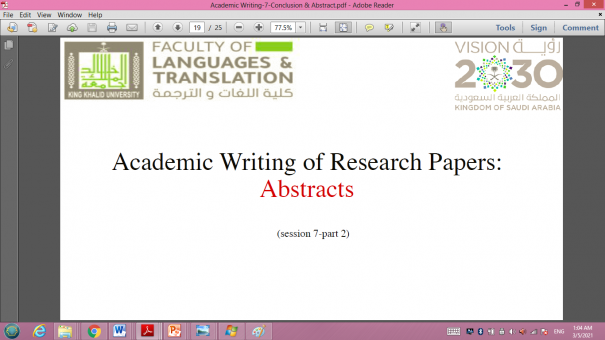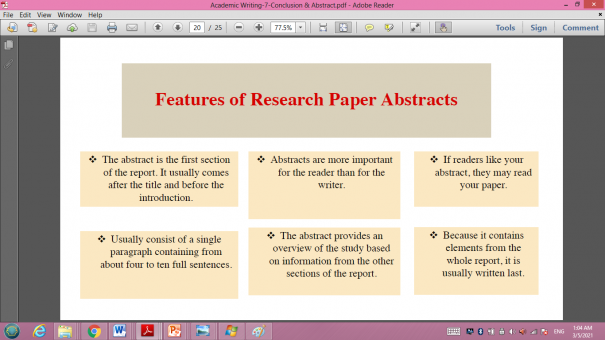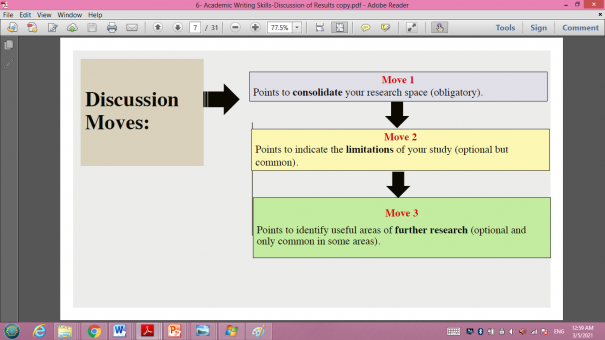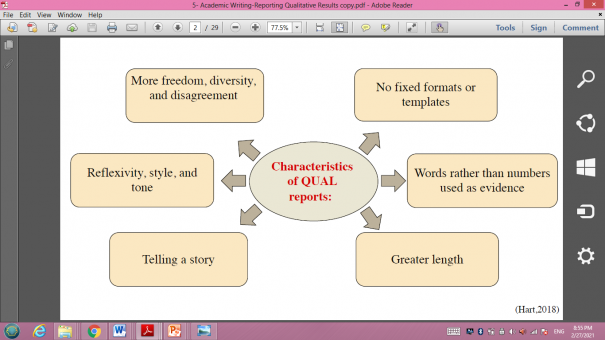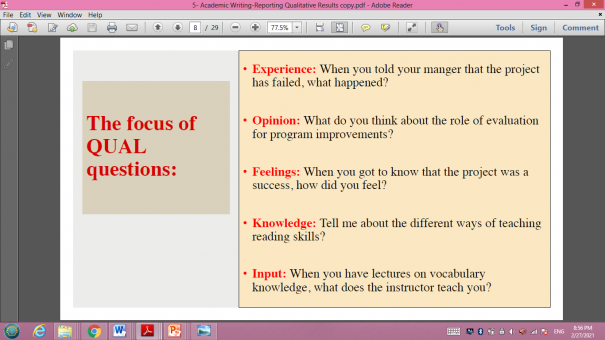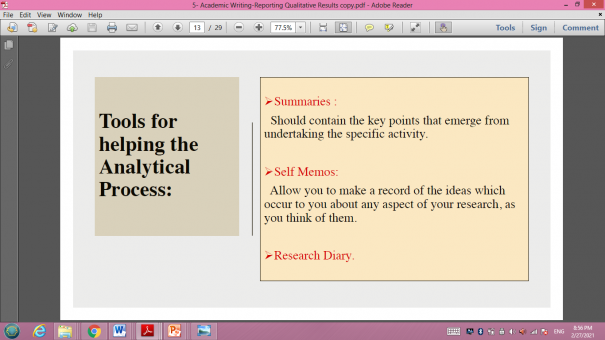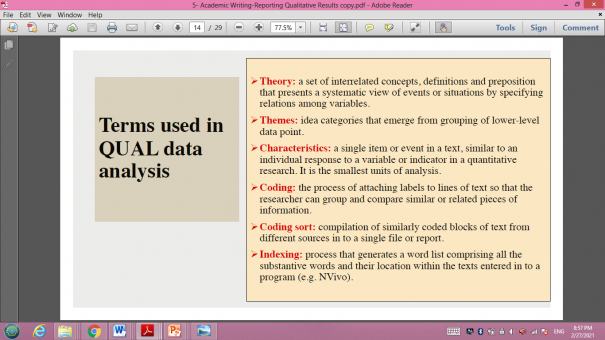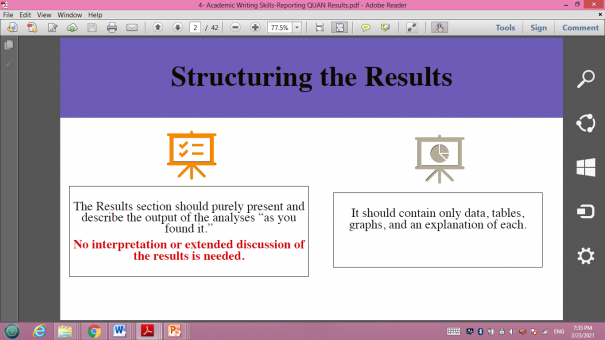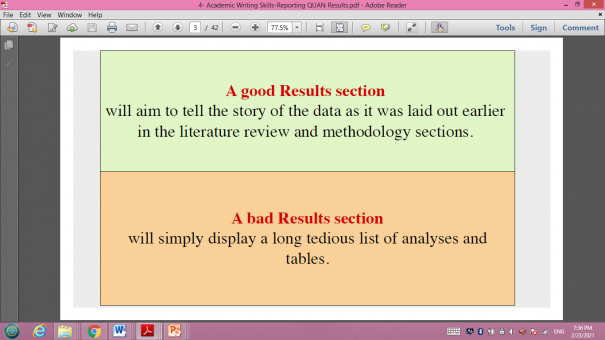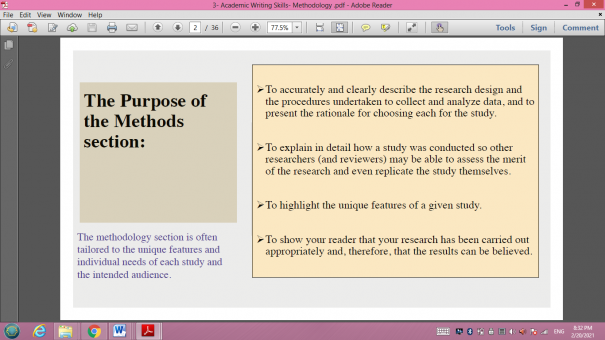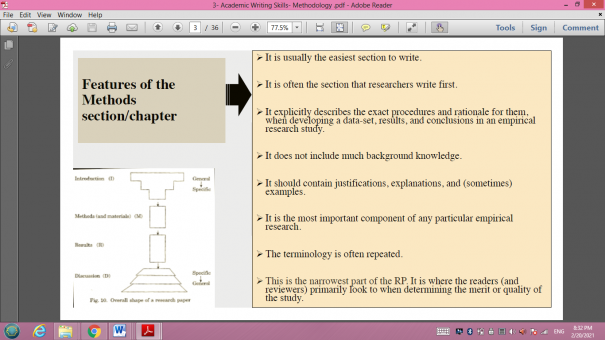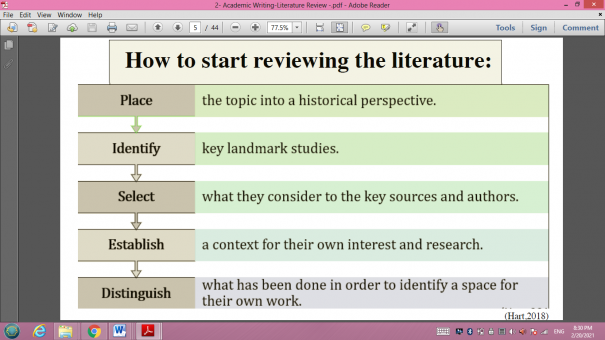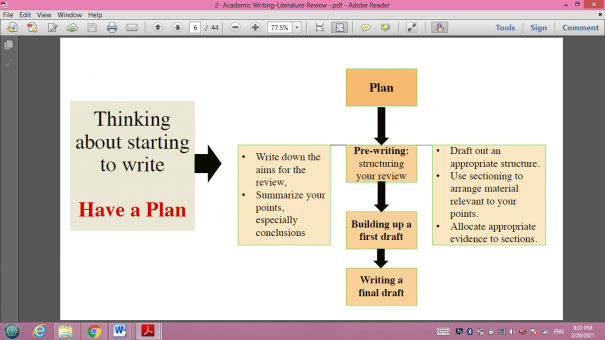Academic Writing Webinar: Session 7
On March 3, 2021, the Women's Scientific Research Committee of the Bachelor of Arts in English program organized the seventh and last session of webinars on academic writing by Dr. Nada Alqarni.
"It is highly recommended the inclusion of a short concluding section", said Dr. Alqarni. Most readers can read the conclusion as well as the abstract as they summarize the main findings of the research paper in a non-technical language, as she further illustrated. Dr. Alqarni explained the main purpose of the conclusion: "To clearly signal to the reader that the writing is finished and to leave a clear impression that the purpose has been achieved". She also indicated that there are several features of the conclusion; among them are the provision of a summary for the whole paper and the explanation of the paper's main purpose. Accordingly, she emphasized in the "possible structures of the conclusion" that the conclusion should be concise and clear.
After that, Dr. Alqarni illustrated some common mistakes that the author should steer clear of in his/her conclusion. Additionally, she stated that the author should use basic synthesis of information in the conclusion. She also emphasized that he/she should restate results, highlight achievements, outline possible applications and implications of the work, and propose future work for third parties to carry out in his/her conclusion.
Following this section about the conclusion, Dr. Alqarni moved to discuss the abstract, which was the second part of this session. "The abstract is a very important paragraph at the beginning of your research paper'', said Dr. Alqarni. She pointed out that there are many features of the research paper abstracts. She also indicated that there are two main approaches to writing research paper abstracts: "a result-driven'' abstract and "a research paper summary abstract". Dr. Alqarni further illustrated the correct order of the research paper abstract. She finally displayed an example of an abstract from the article "Use of a Writing Websites by Pre-Masters Students on an English for Academic Purposes Course".
By the end of the seventh session of the academic writing series of webinars, attendees had the opportunity to ask their questions and share their suggestions and thoughts.
Date: 3/5/2021
Source: Khairyah Al-Beshri - Scientific Research Committee



